Bombs, guns and sea lions
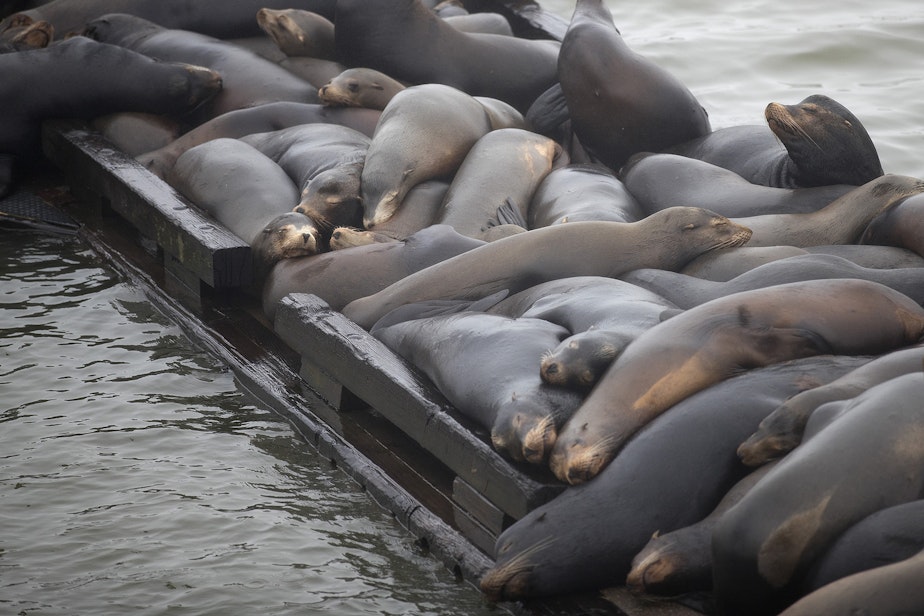
On the west coast of North America is an ecological puzzle that has become unexpectedly complicated.
It’s the story of oceans, rivers, salmon and survival; also bombs, guns and billion dollar infrastructures. Everyone wants a piece of the prize.
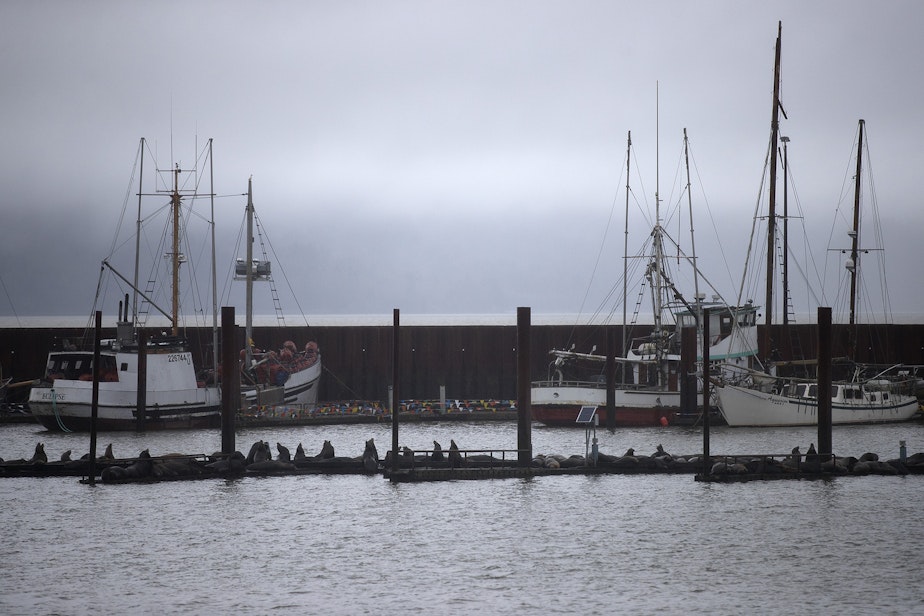
That includes a 900 pound, eight foot long sea lion and its journey from the Channel Islands of California near Los Angeles, along the coastline and up the Columbia River between Oregon and Washington.
The sea lion is following the salmon and the salmon are following their nose to their breeding grounds. About 2 million salmon return to their birthplace in the Columbia River to spawn the next generation. In the 1800s, that number was closer to 10 million.
Sponsored
The salmon are declining, but sea lions are increasing, thanks to protections put in place in the 1970s. But now there is a protected species chasing an endangered species up the river.
Some sea lions follow their prey about 150 miles up the river, until they all hit the bottleneck created by the Bonneville Dam. This Depression-era structure has become the focal point for the struggle for survival involving salmon, sea lions and humans.
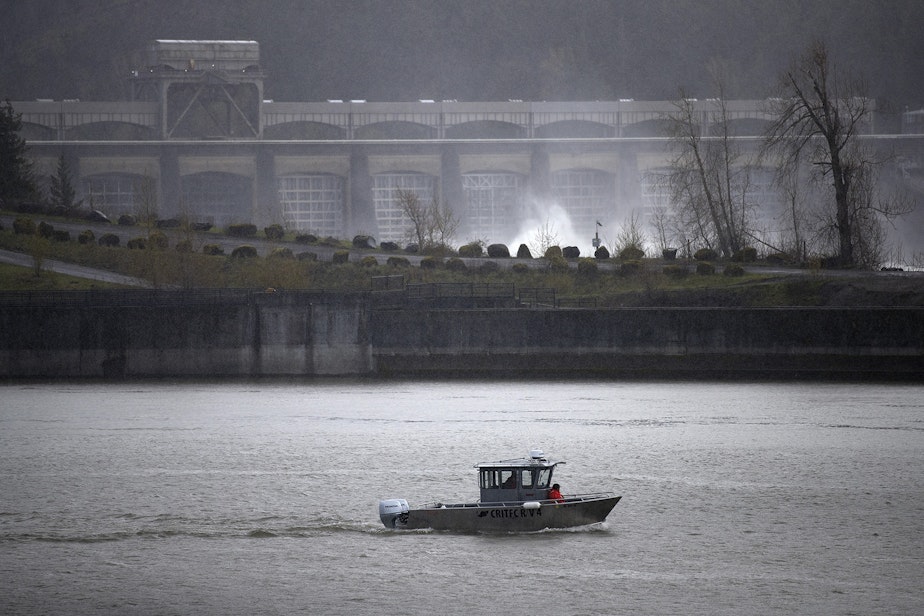
Sponsored
The dam has thrown the ecosystem out of whack. For the salmon to get past the dam they have to swim up a fish ladder, a series of man-made elevated water pools.
That’s after dodging the 300 or so sea lions that have learned to catch salmon at the base of the dam. In the spring they can eat around 20-40% of the salmon near the dam.
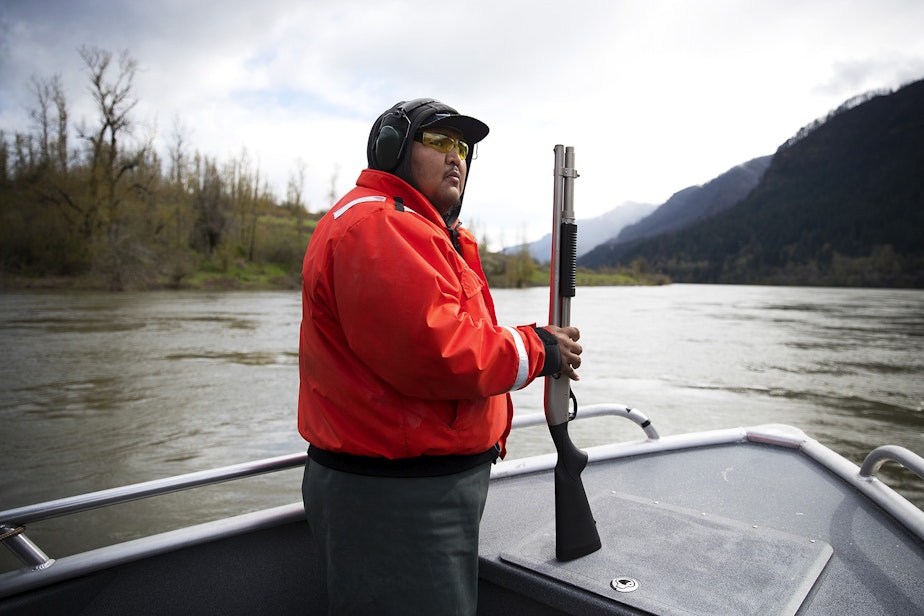
Sponsored
Native Americans also depend on the salmon, have so for thousands of years. It’s their lifeblood.
So they enter the traffic jam on boats to get between the sea lions and the salmon, scaring away the large mammals with underwater explosives and shotgun bangers. The tactics are legal. Some of the more troublesome sea lions are even euthanized.

Of course it’s not just sea lions and people who depend on the salmon making it to their spawning grounds and sending the next generation back down the river to the ocean, but countless other species too, including orcas and bears.
They’re all part of the puzzle of survival.
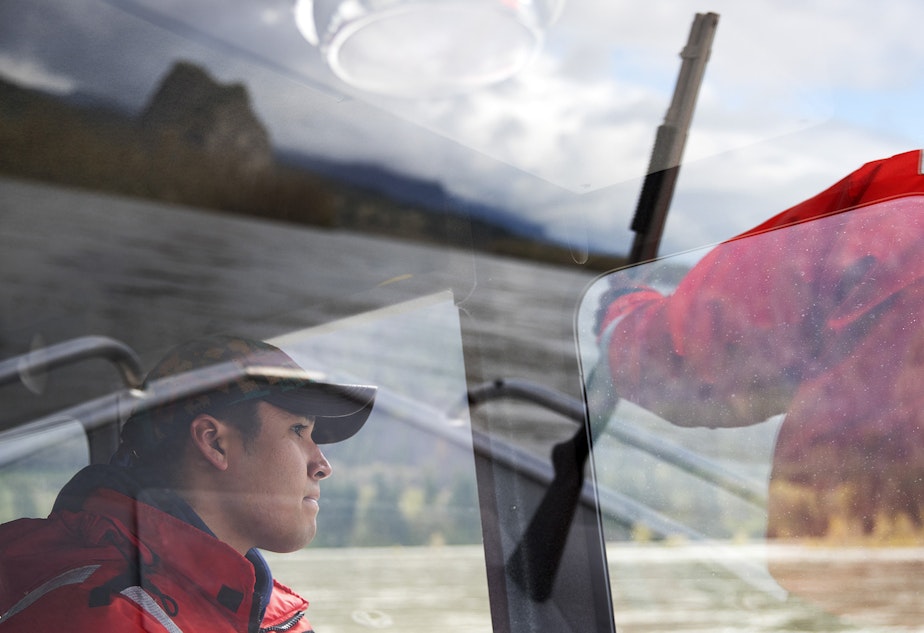
Sponsored
THE WILD is a production of KUOW in Seattle in partnership with Chris Morgan Wildlife and The UPROAR Fund. It is produced by Matt Martin and edited by Jim Gates. It is hosted, produced and written by Chris Morgan. Fact checking by Apryle Craig. Our theme music is by Michael Parker. Produced for the web by Kara McDermott.
Explore where we have gone to report on this season of THE WILD. You can zoom, move around and click on the icons for more tidbits:





